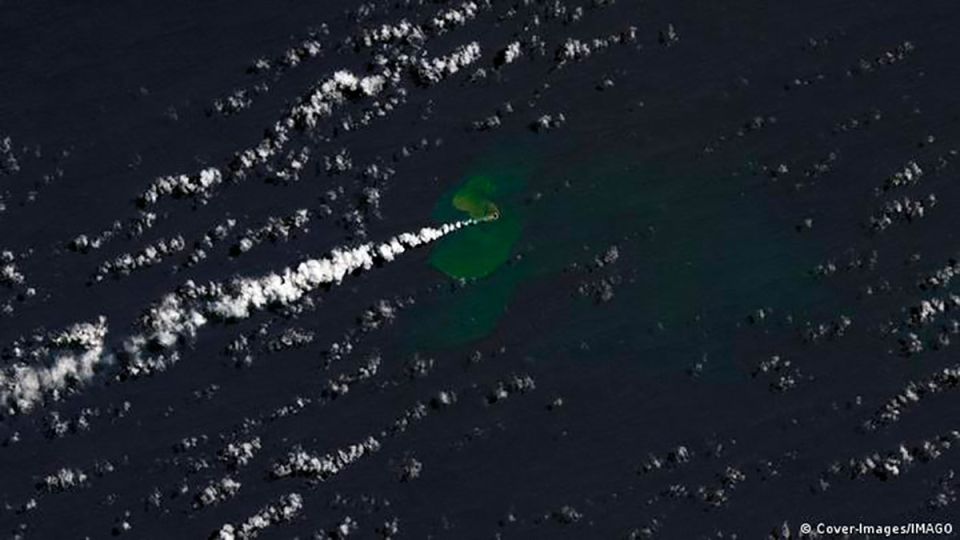One of the newest islands on Earth has spectacularly appeared in Tonga following a volcanic eruption, NASA images show.
Volcanic eruptions in the southwestern Pacific Ocean have created a new island in the middle of the 170-island nation of Tonga, according to satellite images.
The underwater volcano known as Home Reef awoke after 16 years of deep sleep to rear its head on Saturday, September 10, oozing lava and spewing plumes of steam and ash into and out of the water, NASA’s Earth Observatory said in a statement. Press release.
Just 11 hours after the eruption began, a new island had appeared, and NASA confirmed its formation with satellite images.
When the island was first surveyed on September 14, it was estimated to have an area of 4,000 square meters with an elevation of 10 meters. On Monday, the Geological Survey of Tonga said the latest estimates show the island has grown six times to 24,000 square metres.
The formation of the new island was captured by images taken by the Operational Land Imager-2 (OLI-2) on the Landsat 9 satellite on September 14. In the natural-color image (on cover), a vast plume of steam and ash is seen moving away from the volcano. A cloud of discolored water can also be seen growing around the landmass, created by the presence of superheated, acidic seawater containing fragments of volcanic rock and sulfur.
Home Reef underwater volcano
According to NASA’s Earth Observatory, Home Reef is located within the Tonga-Kermadec subduction zone, an area where three tectonic plates collide at the world’s fastest convergence boundary. The Pacific plate sinks under two other small plates, creating one of the deepest trenches on Earth and the most active volcanic arcs.
NASA says that islands created by underwater volcanoes “are usually short-lived.”
Although it seems like a new addition to the Pacific nation, the island is not likely to stay; NASA says that islands created by underwater volcanoes “are usually short-lived.”
Home Reef has even created some of these short-lived islands. Small islands were formed after the eruptions of 1852, 1857, 1984 and 2006, with the last two creating islands with maximum heights of 50 to 70 meters high, respectively. Still, hope remains that the island will have a longer life: NASA added that in 1995, the nearby Late’iki volcano created an island that existed for 25 years.
On the other hand, experts assure that the volcanic activity poses a low risk to the nearby communities of Vava’u and Ha’apai, and have advised boaters to stay more than 4 kilometers away from Home Reef “until further notice”.

